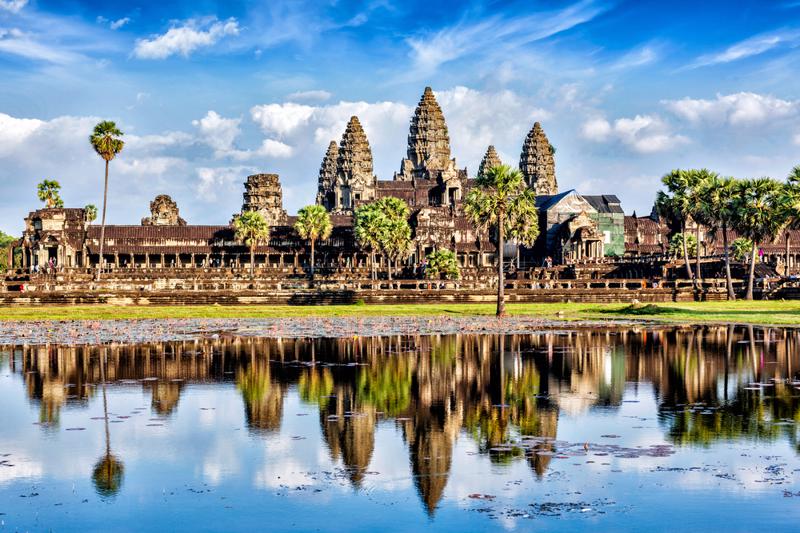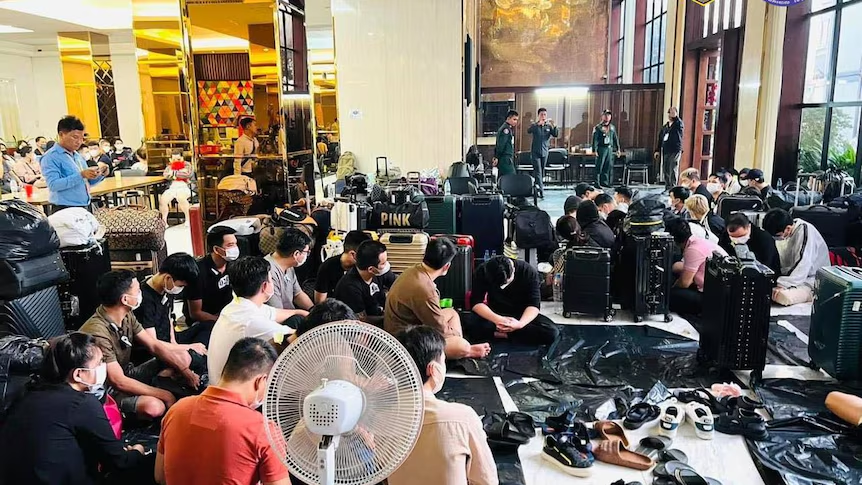Cambodia, a country located on the Indochina Peninsula, is often associated with the ancient ruins of Angkor and tropical landscapes by the outside world. However, a closer look reveals that it is a country full of contradictions: its economy is growing rapidly, but social issues are also severe, especially with the rampant growth of gray industries such as custom trade, telecom fraud parks, and the gambling industry.
From Ancient Kingdom to Modern Dilemmas
The full name of Cambodia is "Kingdom of Cambodia," with a total area of about 180,000 square kilometers, bordered by Thailand and Laos to the north, Vietnam to the east, and the Gulf of Thailand to the south. The population is projected to be about 17.85 million in 2025, predominantly Khmer, accounting for over 90% of the total population, with minorities including Cham, Vietnamese, and Chinese. Religiously, over 95% adhere to Theravada Buddhism, which is not uncommon in Southeast Asia.
Historically, Cambodia was a powerhouse in Southeast Asia: from the 9th to the 15th century, the Angkor dynasty built magnificent temple complexes, with Angkor Wat being the representative work, now a World Cultural Heritage site. However, since the 15th century, the country began to decline, gradually losing territory to Thailand and Vietnam, and became a French colony in the 19th century. It was occupied by Japan during World War II, after which France regained control until independence in 1953. Post-independence Cambodia remained turbulent: the rise of the Khmer Rouge led to the deaths of millions, economic collapse; Vietnamese occupation and civil war lasted for many years, until the Paris Peace Agreements were signed in 1991, and democratic elections and government systems were not restored until 1993.

Modern Cambodia is still one of the least developed countries recognized by the United Nations. The GDP in 2024 is about 46.4 billion USD, projected to be 51 billion USD in 2025, with a per capita GDP of about 3000 USD, lower than neighboring Thailand and Vietnam. The economy mainly relies on agriculture, the textile industry, and services, with textile exports accounting for about 80% of total exports, and tourism being the second largest source of foreign exchange, receiving 5.4 million international tourists in 2023. Agriculture focuses on rice, rubber, and corn, but the industrial base is weak, and labor skills are low, with a literacy rate of only 88% in 2023, below the ASEAN average. The World Bank predicts an economic growth rate of about 4%–6.3% in 2025, but the poverty rate remains high, especially in rural areas, with many people earning less than 2000 RMB per month.
Socially, some areas of Cambodia still retain matrilineal society characteristics: women hold higher positions in families and business, often bearing the responsibility of supporting the family, while men are more involved in household chores and childcare. After marriage, men often move into the woman's family home, and women control the management of shops. However, lower-class women are severely exploited in the gray industries. The wealth gap is widening, with the rich living in villas, employing servants, while the lower-class residents cram into shantytowns, struggling to survive. High prices, with Phnom Penh beer costing about 50 RMB per bottle, and a chicken leg meal costing 10 USD, put great pressure on people's lives, further fostering the growth of gray industries.
Corruption is severe, with a low ranking in the Transparency International Index. Government officials are often involved in land grabbing, illegal transactions, and the backward education system leads to a lack of skilled labor, making it difficult for high-end industries to establish. Foreign investment, especially from China, although promoting economic growth and building special economic zones and infrastructure, also brings some gray industries and social issues.
Custom Trade: A Deep-rooted Malaise Intertwined with Poverty and Historical Trauma
Custom trade is explicitly prohibited by Cambodian law (the 2008 law stipulates a prison term of 7–15 years for adult sexual exploitation, 15–20 years for children), but the actual number of practitioners remains high at about 150,000, mainly women and girls, mostly from rural areas, lured or sold into city bars, massage parlors, or hidden places by brokers.
The root cause lies in deep poverty and historical trauma: the population sharply reduced during the Khmer Rouge era, the economy paralyzed; the Cold War and civil war led to the collapse of the education and medical systems, forcing many lower-class women to bear the economic burden of their families, being forced from the fields into the cities to make a living. The U.S. State Department's 2023 report states that Cambodia is still a Tier 3 country in human trafficking, not meeting the minimum standards. Law enforcement is selective, with corrupt officials protecting illegal venues, and only a few cases were prosecuted from 2019 to 2022, with limited punitive measures.
Historical factors also exacerbate the problem: social structures were destroyed by wars, and the demand surged when the United Nations peacekeeping forces arrived in the 1990s. Child labor and underage female trafficking occur frequently. NGO reports show that about 90% of sex workers are "voluntary," but exploitation is severe, and health risks are high. The recovery of tourism after the pandemic brought more tourists, further fostering the development of the custom industry. The rate of child marriage is high, with girls aged 15–18 facing an increased risk of being trafficked, and the demand from China also drives brides to be forced to China for labor and sexual exploitation.
Telecom Fraud Parks: A Dark Industry Fueled by Corruption and Foreign Investment
In recent years, telecom fraud parks in Cambodia have rapidly developed, concentrated around Sihanoukville and the outskirts of Phnom Penh, mostly converted from former casinos. About 100,000 people are forced to engage in telecom fraud, mainly targeting victims worldwide, especially in China. Victims' passports are confiscated, with high walls, barbed wire, guards patrolling, and those attempting to escape subjected to beatings or electric shocks.

Why has Cambodia become a hotbed? Its advantageous geographical location facilitates cross-border operations; Chinese investment has poured in, and after the popularization of 4G networks, funds flowed into online gambling and fraud; the underground industry quickly transformed after the pandemic. The U.S. State Department points out that high-level officials are involved, the police give advance warnings, and law enforcement is ineffective. In 2023, the United Nations estimated that at least 100,000 people were enslaved, involving child pornography, cryptocurrency, and drug transactions.
Gambling Industry: The Wild Growth of an Underground Empire
Although part of Cambodia's gambling industry is legal, restrictions are strict: unauthorized gambling was banned in 1996, online gambling in 2019, and new laws in 2020 further regulated the industry. Locals are prohibited from gambling, but foreigners can enter about 150 legal casinos, mainly concentrated in Sihanoukville and Phnom Penh. Underground and online gambling remain rampant, with foreign investment driving the rapid development of casinos, attracting Chinese and Thai gamblers. The pandemic and bans accelerated the shift of gambling underground, simultaneously fostering modern slavery, forced labor, and telecom fraud.
Corruption makes the law virtually ineffective, with officials protecting casinos and taking bribes. Lower-class citizens become dealers or waiters, earning high incomes but at great risk. Gambling temporarily boosts the economy, but brings long-term social costs: increased crime, money laundering, drug transactions, affecting the country's reputation and confidence in tourism investment.
Causes and Prospects of Gray Industries
The spread of custom trade, telecom fraud parks, and underground gambling is a product of poverty, corruption, backward education, historical trauma, and international demand. Foreign investment and international aid bring economic opportunities, but also bring social chaos.
Cambodia has development potential, with tourism and manufacturing growing, but gray industries drag down social order. If the government cannot effectively combat corruption, regulate the market, and improve education and social security, these disorders will persist, becoming a heavy burden that restricts the country's long-term development.










